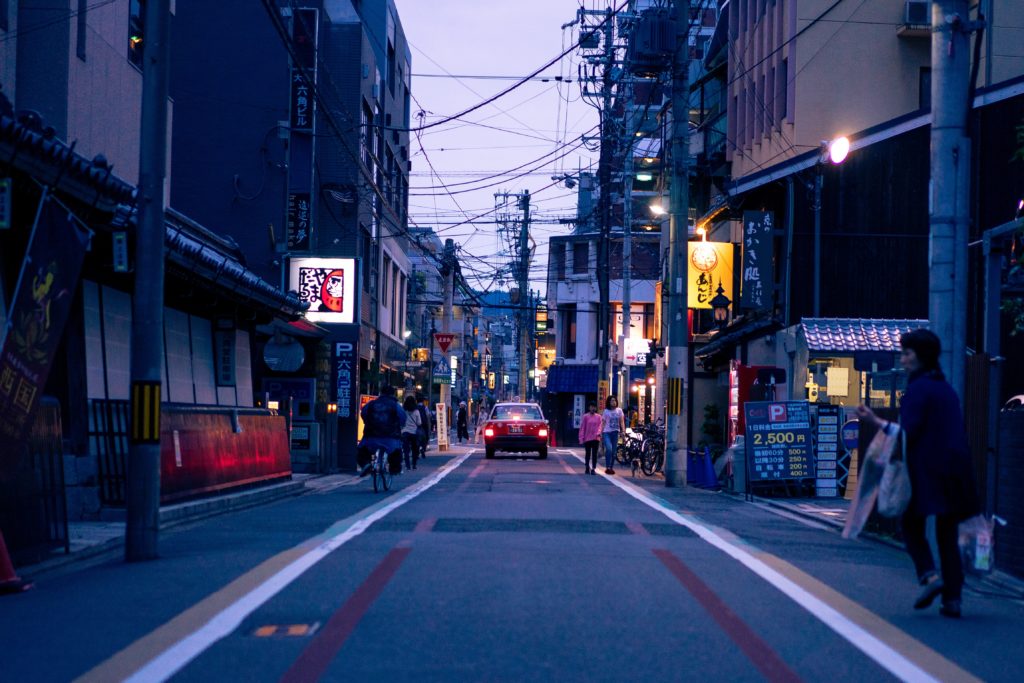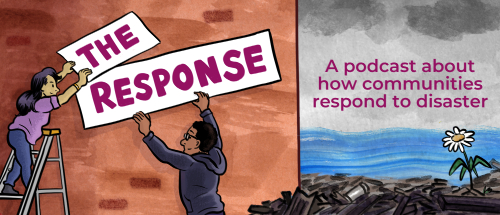When entrepreneurs Alisa Sanada and Megumi Kusunoki started Nagomi Visit, a nonprofit, volunteer-run platform, their motivation was neither profit nor fame. They wanted to offer people living in rural Japanese towns an opportunity to benefit from the large number of tourists visiting the country by creating a platform for local residents to share meals with visitors. This was part of their larger goal for people to form friendships through cultural exchange. When they launched the organization in 2011, the sharing economy had already begun revolutionizing numerous sectors in the U.S., Europe, and other parts of the world. But it hadn’t really taken off in Japan. That’s been changing. Today, Nagomi Visit has over 1,000 hosts all over Japan. Sanada and Kusunoki also launched a site in traditional Chinese this year that’s targeted at visitors from Hong Kong and Taiwan. Along with government-led efforts to create Sharing Cities, a strong push from the country’s massive cooperative sector, and the proliferation of nonprofits like Nagomi Visit, a genuine sharing economy could take root in the world’s third largest economy.
So why now? Part of the reason is Japan’s current socio-economic situation. The country is facing depopulation, growing inequality, and limited job opportunities for youth. “Japan is facing a historical decline of population right now, and the economy has been stagnant for a long time,” says Yusuke Takada, director of policy planning for the Japanese government’s Sharing Economy Promotion Center. “To resolve this dilemma, the sharing economy is needed.” It may be surprising to many to learn that Japan — famous for its technology sector and innovative global companies like Sony, Toyota, and Fujitsu — has been slow to accept companies like Uber and Airbnb. While the country was seen as a huge potential market for ride-hailing and home-sharing platforms, it has mostly resisted their entry. This means the widely documented abuses of workers that have been characteristic of the sharing economy in the U.S. and Europe have not yet had a big impact in Japan.
Today, Uber offers only a limited black-car service in one of Tokyo’s wards. Its efforts to provide the on-demand ride-hailing UberX service was stymied by opposition from the country’s well-organized taxi industry and labor unions. No other ride-hailing platform that isn’t affiliated with a taxi company currently exists in Japan. Similarly, Airbnb had a limited presence until last year, when the national cabinet enacted regulations legalizing the service. Even then, the country’s home-sharing law restricted the practice to just 180 days a year and provided local governments final authority to add additional restrictions.
The sparsity of multinational, corporate sharing platforms in Japan has given room for local sharing projects, startups, and cooperatives across the country to sprout up in both urban and rural areas. The emergence of these new initiatives across the archipelago could herald a new sharing model that places emphasis on solving social problems instead of just turning a profit. By involving the old — Japan’s traditional concept of commons and its decades-old cooperative sector — along with the new, the country could show the way in building a democratic, cooperative sharing economy.
Japan’s history of sharing
What gives Japan a leg up in creating this new cooperative sharing economy is its long tradition of sharing at the local, regional, and national levels. This is most noticeable in the idea of the commons, which was central to Japan during the Edo period, between 1603 and 1868 when Japan was under the rule of the Tokugawa shogunate and isolated from much of the world.
“In Edo era, the sense of commons was stronger than sharing… might be a well that a community uses together, or cooperative housing, or families taking care of each other’s children,” says Shintaro Eguchi, a researcher and co-author of “Civic Economy in Japan.” However, after the Meiji restoration in 1868, when the rule of the Emperor was restored and Japan opened up to foreign trade and technology, the country moved towards a capitalist economy and underwent rapid modernization. This eventually led to a full-scale war economy. According to Eguchi, the concept of common property and community management weakened and was eventually abandoned as more and more people moved to urban areas.
“Modernization meant the sense of capitalism and individuality has gotten stronger, including the sense of having individual resources,” Eguchi says. To address the demands of a modern economy, a new form of sharing emerged through the rise of worker cooperatives. Especially after World War II, when Japan’s infrastructure and economy was destroyed, cooperatives spearheaded the rebuilding process, particularly in the countryside. In the decades after the end of World War II, Japan established laws to regulate consumer cooperatives as well as agricultural, forestry, fishing, and financial cooperatives. Now the country boasts one of the largest cooperative sectors in the world.
Photo of forest management group courtesy of Japan Cooperative Workers Union
A robust cooperative sector
“In Japan, the cooperative movement has over 65 million people as a members, almost half of the total populations, and our turnover is over 145 billion USD,” says Osama Nakano, international relations officer with the Japanese Workers Cooperative Union. Cooperatives grew quickly during what is now considered Japan’s economic boom period — the 1970s and 80s — when the country became a global economic powerhouse and the second largest economy, after the United States. The boom of the 70s and 80s is in the distant past now. Japan’s economic upturn ended in the early 90s, and the country has only seen sporadic growth since then. The key problems include declining birthrates and an increasingly aging population. In 2011, Japan became the first country in the modern era to experience a peacetime decline in population, according to The Tokyo Times. Since then, the decline has only increased. If birth rates don’t rise and immigration levels remain low, the country could see its population shrink from 127 million today to 100 million by 2050, according to projections from the Japanese National Institute of Population and Social Security Research. This problem is being felt more acutely in the countryside and smaller cities.
“As population is declining, very few businesses are willing to move to rural areas,” says Eguchi. “Young people are leaving these areas to look for jobs in big cities, and thus rural areas are becoming more elderly.” Many think that a shrinking working-age population is the key reason that Japan’s economy has been seeing mostly stagnant growth for the past few decades. But it is only part of the story. Fewer people of working age means that the country also has low unemployment, and is facing an acute labor shortage. Yet, this has not translated into better paying jobs for young people in the country. “Over 20 million workers are right now working as non-regular workers in Japan. The number of recipients on public assistance is growing every year,” Nakano says, adding that youth poverty in Japan is among the highest of any country that is member of the Organization for Economic Co-operation and Development (OECD), a group of 35 highly industrialized economies.
During Japan’s economic boom, many people in the country benefited. Japan’s income inequality was and still is far lower than the U.S. and many European countries. But that’s also been changing. “Many people believe that Japan is a rich country, and in a certain sense, it is true, there are many rich Japanese,” says Nakano. “However, the gap between the rich and poor is growing more and more.” These challenges are more serious outside Japan’s two major metropolitan areas, Tokyo and Osaka, which are still attracting young people and have relatively vibrant economies. It is in the countryside, and in Japan’s smaller cities, where one can really see the impacts of an aging society.
Emergence of rural Sharing Cities
“One of the biggest challenges is the disappearance of inhabitants of local regions,” says Tessei Hosokawa, a co-founder at Tabica, a company that promotes sharing of Japanese culture with tourists. “This results in a loss of cultural knowledge and habits.” It should come as no surprise then many of the early, emerging Sharing Cities in Japan are not in major metropolitan areas, but smaller cities that are facing the brunt of Japan’s economic and depopulation crisis. So far, 17 cities have been officially accredited as Sharing Cities. There are currently 17 other cities that are in the process of becoming accredited as prospective or candidate Sharing Cities, according to the Sharing Economy Association of Japan.
Only Shibuya, one of the cities that’s part of Tokyo’s metropolitan region, represents Japan’s major urban areas. Others include Amami City in Kagoshima prefecture, which is welcoming digital nomads through the Lancers platform; Kaga City in Ishikawa prefecture where the culture sharing platform Tabica has allowed locals to share food, cultural practices, and more with visitors; Yuzawa in Akita prefecture which has been an early adopter of the space-sharing platform Spacemarket; and Teshio-Cho in mostly rural Hokkaido which has embraced the long-distance ride-sharing platform Notteco due to the limited transportation options in the region.

Shimabara Castle is one of the sharing space of Spacemarket provided by Sharing Economy Association Japan
According to Takeshi Sabetto, executive director of the Sharing Economy Association of Japan, the country’s largest trade group representing sharing economy businesses, it is no surprise the smaller cities are the ones willing to try out sharing. “Japanese local cities are demanding solutions to overcome the [worsening economic] cycle and scarcity of ideas, innovation, and population, and they think sharing economy could be useful,” Sabetto says.
For example, take Tokushima, a city in Shikoku island with a population of just over 250,000. It draws few visitors throughout the year, except in August when it hosts the Awa Odori Dance Festival, a traditional event which welcomes an astounding 1.2 million people to the prefecture for four days. Unfortunately, the economic benefit of the Awa Odori festival to Tokushima is limited because the city has hotel accomodations only for about 6,800 people. This means many visitors just come for day trips, and most city residents don’t gain much from hosting the festival.
Pasona, a Japanese employment and staffing solutions company and a member of the Sharing Economy Association, saw an opportunity for home sharing to help bring real benefits to villagers, particularly elderly ones with extra space in their homes. Pasona took a more collaborative approach in implementing their services. They started by building a relationship with the city and allowed local officials to take the lead in how the service would take shape in Tokushima.
“We spent six months to build the partnership,” says Ryo Kato, deputy general manager of Pasona’s Social Innovation division. “At the beginning of this project, the hosts were recruited by local government, not by Pasona, because that way, people felt more safe and comfortable.” The pilot project was a success. More than 250 people stayed with 36 local hosts, half of whom were over 60 years old. There were also some positive and unexpected side benefits. “We found the elderly people started to feel more active, and interact with young people from different regions,” said Kato. “It was also an opportunity for them to learn about local culture once again.”
Sharing to counter systemic problems
Kato says his model could help address the growing social isolation that many elderly Japanese face. The crisis is so acute in some parts that some elderly Japanese women commited crimes, in hopes that prison would alleviate some of the loneliness they felt, according to reporting by the Pulitzer Center. He says sharing organizations like Pasona can benefit residents even during non-festival days. The staff of Pasona emphasize the need to train those who are using their service. They are in the process of setting up multiple schools to train hosts, social entrepreneurs, local guides, and city leaders. So far, three schools are in operation, in Tokushima, Tohoku, and Tokyo. Kato says he hopes to expand to two more prefectures this year, and graduate 10,000 participants by 2020.
Cooperatives are also gearing up to play a larger role in Japan’s sharing economy. Some cooperatives like Japan Agriculture, the largest agricultural cooperative in the world, are dealing directly with the depopulation issues impacting the areas where the cooperative organization’s member businesses are located. One group taking the lead on building a cooperative-led sharing future for Japan is the Japan Workers Cooperative Union, a 24-member network of worker-owned cooperatives that focus mostly on social projects. “We are engaged various social practice projects in local communities,” says Nakano. “For example, we are providing elderly care, child care, and care for people with disabilities.”
Image of elderly care facility in Japan courtesy of Japan Workers Cooperative Union
The group operates a local welfare business center in Matsudo City. The center provides a day care center for elderly Japanese and offers support services for people with developmental disabilities. The project is run by 19 workers who are members of the cooperative; six have developmental disabilities and eight are elderly. Another key part of the sharing economy where Japan has made some headway is with platform cooperatives. The Platform Cooperative Consortium of Japan was set up earlier this year, and is already holding workshops and events to educate people all from sectors about the importance of shared ownership in the digital economy. One of its early members, Emi Do, who is researching agricultural cooperatives as a doctorate student at the University of Tokyo, sees real potential in Japan.
“There is a great opportunity in Japan for platform cooperatives or applications for traditional co-ops,” says Do. “A lot of the entrepreneurs [here] are trying to solve a social need, and I think the platform co-op model is a good fit.” Part of that enthusiasm comes from the fact that cooperatives are already such a significant part of the country’s economic fabric. “In Japan, people want to believe in a more collective approach to market gaps, which co-ops fill,” Do says. “We just need one or two successes for other people to jump on board.”
What’s next?
For the sharing economy to fully take off and rejuvenate local and regional economies, experts say Japan needs to do more to promote sharing through policy-making. “Sharing economy aspires to an amazing future, and could play a major role in an aging, problem filed society like Japan,” says Keiko Tanaka, assistant professor at The Kyoto College of Graduate Studies for Informatics. “It has great potential, but only if taken in a direction that involves and cares about all stakeholders.”
Takada says the model that Japan should follow is one where cities play a leading role. He says it could be done directly by supporting sharing initiatives like a shared child care center that’s currently being planned in Shibuya or working closely with companies promoting sharing like Pasona’s home-sharing project in Tokushima.
For that, Japan’s sharing policy framework needs to recognize that small, local projects are not constrained by the very laws limiting the actions of large, global platforms, Takada says. “One of the things we need to do is clarify interpretation of the law,” says Takada. “Many laws are made with large companies in mind. … The law is not made for individuals who want to share.” There is a greater role that the cooperative sector can play too — specifically, worker-owned cooperatives. While the Japan Workers Cooperative Union has over 13,000 individual members, their growth is stymied by the lack of a legal framework for worker cooperatives in Japan. Currently worker co-ops in Japan are organized through three different legal mechanisms, a cumbersome process that creates barriers to entry, as it requires patience and legal knowledge that few entrepreneurs have.
That is why, for 20 years, Japan’s cooperative sector has been fighting for a worker cooperative law, doing extensive lobbying both in Tokyo, and across the country with local and regional governments. It now has widespread support across the political spectrum. The union expects that the law will be submitted to parliament in the next session — either this fall or next spring. If it becomes easier to setup worker cooperatives, they can provide even more social services to address rising inequality, long hours, and exploitative working conditions. But there is an even bigger potential — to make worker-owned cooperatives a true business option for everyone, as the bill would make registering a cooperative as easy as starting a regular, for-profit business.
“If our law is enacted, there are many benefits for all citizens in Japan, because anyone can start a cooperative business,” says Nakano. Japan is facing serious challenges that other countries are already facing or bound to face soon. Soon, more countries will start to see declining population and, with it, the potential for rural economic stagnation. What is taking place in Japan matters. Sharing, if designed properly, can be a solution to build local resilience to counter these challenges. Japan has the potential to point the path forward for other countries to build a sustainable, equitable, and shared economic future.
Shareable is an advisor to the Sharing Economy Association of Japan.
Header image by JuniperPhoton via Unsplash










